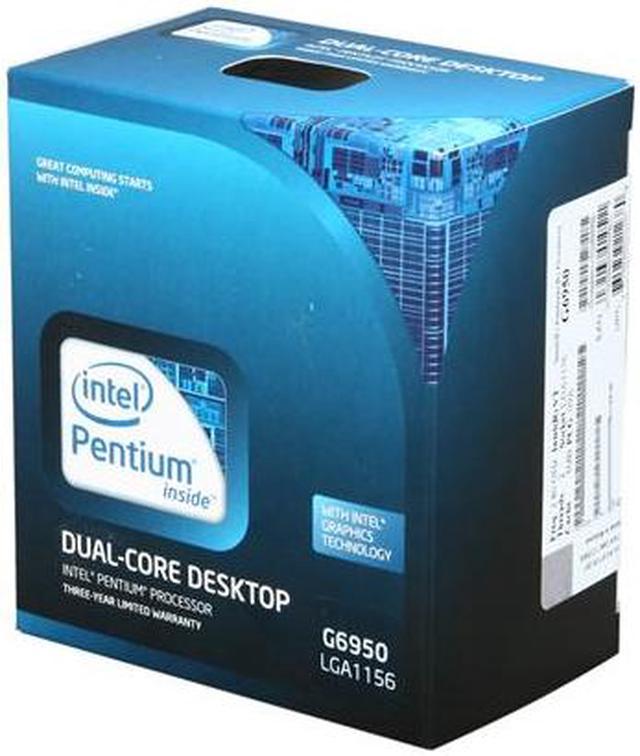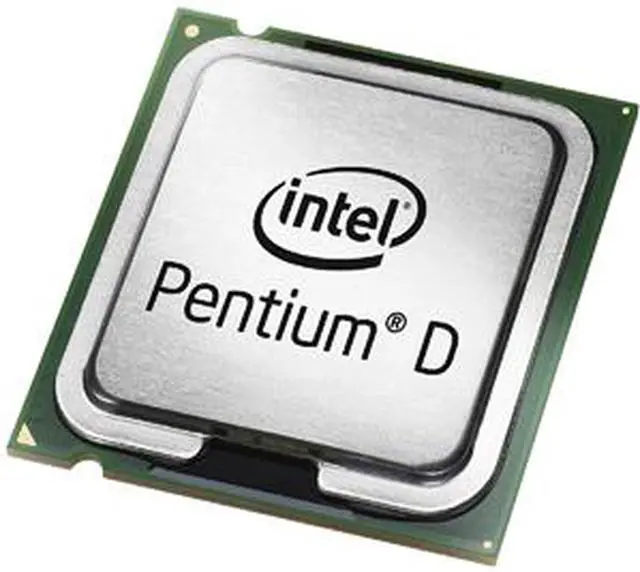Your Browsing History


Make informed decisions with expert advice. Learn More
Any questions? Our AI beta will help you find out quickly.
 Specialized Dual-core MicroarchitectureThe Intel Pentium processor includes dual execution cores in a single processor to enable execution of parallel threads or applications simultaneously, resulting in revolutionary dual-core performance, breakthrough energy efficiency and exceptional system response time when running multi-threaded applications, or multiple demanding applications. The innovative 32nm fabrication technology optimizes thermal performance for reduced power consumption and noise.
Specialized Dual-core MicroarchitectureThe Intel Pentium processor includes dual execution cores in a single processor to enable execution of parallel threads or applications simultaneously, resulting in revolutionary dual-core performance, breakthrough energy efficiency and exceptional system response time when running multi-threaded applications, or multiple demanding applications. The innovative 32nm fabrication technology optimizes thermal performance for reduced power consumption and noise. Intel Graphics TechnologyIntel Graphics Technology provides a visually stunning experience optimized for Blu-ray and HD video with Windows Vista support and comes standard with many notebooks, desktop computers and motherboards—without the need to add an external and costly graphics card.
Intel Graphics TechnologyIntel Graphics Technology provides a visually stunning experience optimized for Blu-ray and HD video with Windows Vista support and comes standard with many notebooks, desktop computers and motherboards—without the need to add an external and costly graphics card. Intel Advanced Smart CacheIntel Advanced Smart Cache Technology dynamically allocates the shared L3 cache to each processor core based on workload. This efficient, multi-core-optimized implementation increases the probability that each core can access data from fast L3 cache, resulting in significantly reduced latency for frequently used data and improved performance.
Intel Advanced Smart CacheIntel Advanced Smart Cache Technology dynamically allocates the shared L3 cache to each processor core based on workload. This efficient, multi-core-optimized implementation increases the probability that each core can access data from fast L3 cache, resulting in significantly reduced latency for frequently used data and improved performance. Greater Performance with Hyper-Threading TechnologyHyper-threading enables multi-threaded software applications to execute two software threads in parallel to improve system responsiveness. Intel Pentium G6950 enabled with HT Technology delivers performance and multitasking gains that result in increased productivity and efficiency.
Greater Performance with Hyper-Threading TechnologyHyper-threading enables multi-threaded software applications to execute two software threads in parallel to improve system responsiveness. Intel Pentium G6950 enabled with HT Technology delivers performance and multitasking gains that result in increased productivity and efficiency. Enhanced Intel SpeedStep Technology (EIST)EIST allows the system to dynamically adjust processor voltage and core frequency to decrease average power consumption and average heat production. Combined with existing power saving features, EIST may provide an excellent balance between providing power when you need it and conserving power when you don’t.
Enhanced Intel SpeedStep Technology (EIST)EIST allows the system to dynamically adjust processor voltage and core frequency to decrease average power consumption and average heat production. Combined with existing power saving features, EIST may provide an excellent balance between providing power when you need it and conserving power when you don’t. Execute Disable Bit (EDB)Intel's Execute Disable Bit function can prevent certain classes of malicious "buffer overflow" attacks when combined with a supporting operating system. Execute Disable Bit allows the processor to classify areas in memory where application code can execute and where it cannot. When a malicious worm attempts to insert code in the buffer, the processor disables code execution, preventing damage or worm propagation.
Execute Disable Bit (EDB)Intel's Execute Disable Bit function can prevent certain classes of malicious "buffer overflow" attacks when combined with a supporting operating system. Execute Disable Bit allows the processor to classify areas in memory where application code can execute and where it cannot. When a malicious worm attempts to insert code in the buffer, the processor disables code execution, preventing damage or worm propagation.